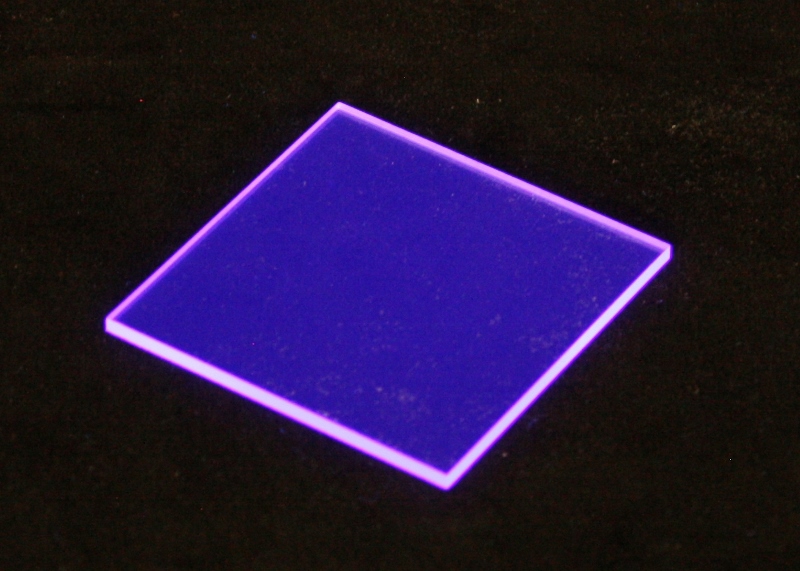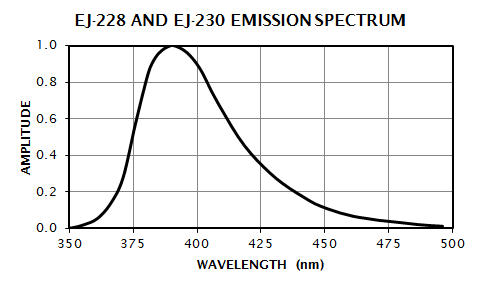FAST TIMING
EJ-228, EJ-230

These plastic scintillators are intended for very fast timing applications or when very high pulse pair resolution is required. The use of light guides is best avoided.
EJ-228 should be used in small sizes for the best timing results, with the largest scintillator dimension less than 10 cm to minimize photon scattering effects. This scintillator is particularly useful where very high count rates are present.
EJ-230 is a variant on the optimized EJ-228 formula for applications where a detector dimension must exceed 10 cm. The mean free path of the scintillation emission spectrum is typically 100 cm. Scintillators up to 50 cm can be employed with good timing and light collection results. This scintillator is particularly useful where very high count rates are present.
| PROPERTIES | EJ-228 |
EJ-230 |
| Light Output (% Anthracene) | 67 | 64 |
| Scintillation Efficiency (photons/1 MeV e-) |
10,200 | 9,700 |
| Wavelength of Maximum Emission (nm) | 391 | 391 |
| Light Attenuation Length (cm) | - | 120 |
| Rise Time (ns) | 0.5 | 0.5 |
| Decay Time (ns) | 1.4 | 1.5 |
| Pulse Width, FWHM (ns) | 1.2 | 1.3 |
| No. of H Atoms per cm3 (x1022) | 5.15 | 5.15 |
| No. of C Atoms per cm3 (x1022) | 4.69 | 4.69 |
| No. of Electrons per cm3 (x1023) | 3.33 | 3.33 |
| Density (g/cm3) | 1.023 | 1.023 |
| Polymer Base | Polyvinyltoluene |
| Refractive Index | 1.58 |
| Softening Point | 75°C |
| Vapor Pressure | Vacuum-compatible |
| Coefficient of Linear Expansion | 7.8 x 10-5 below 67°C |
| Light Output vs. Temperature |
At 60°C, L.O. = 95% of that at 20°C
No change from -60°C to 20°C
|
| Temperature Range | -60°C to 60°C |
|
Chemical Compatibility
Attacked by: Aromatic solvents, Chlorinated solvents, Ketones, Solvent bonding cements, etc.
Stable in: Water, Dilute acids and alkalis, Lower alcohols, and Silicone greases.
It is safe to use most epoxies with these scintillators.
|
